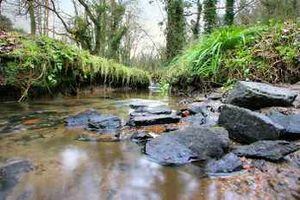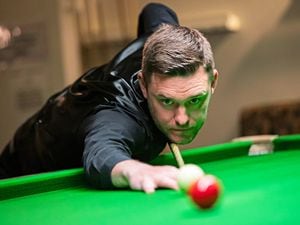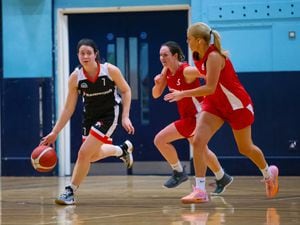Where the wild things are
Wildlife conservation has come on since the days when a Rocquaine orchid field was ploughed over and planted with spuds. Tim Earl takes a walk down memory lane and is pleased with much of what he sees...

PEOPLE look amazed when I tell them that I've been out training for my next spell away on tour or a cruise.But it is a fact that field-skills have to be honed, ears sharpened and even one's legs must be up to daily walks and rambles.
So it was that I walked down memory lanes last week to prepare myself for private clients who have booked me for a day's wildlife watching here in Guernsey.
I walked from the former fish-processing factory at Rocquaine up to the Silbe nature reserve in the Rue de Quanteraine via the orchid fields along the Rue des Vicheries.
Nostalgia dominated the early part of my ramble. The late George Bramall and I had looked long and hard at the factory which started life as a summer camp for city children brought to Guernsey for holidays, long before annual journeys to the sunny Mediterranean were popular.
We had set up Holiday Pak to sell packages of information to visiting birdwatchers, botanists and archaeology enthusiasts and considered offering a centre with accommodation, lecture theatre, displays and interpretation boards, exhibits and people to give advice.
Things did not work out as we hoped, however, and the idea was shelved.
A few months later one of the fields along Rue des Vicheries came up for auction. It is a corner field, large by the standards of Rocquaine, and was brim-full of loose-flowered orchids.
These rare plants are not found in England and La Societe Guernesiaise was attempting to buy up fields to protect them. In her 'Dictiounnaire', the late Marie de Garis calls them pennecoute in Guernsey-French, meaning Whitsun orchids, as they flower at about that time of year.
I had a little spare cash and sent botanist Patience Ryan (now also no longer with us) along to bid for it with £400 in her hand. The field went for £450 and we did not get it.
To our horror, the new owner immediately put a plough through it and started growing potatoes.
The States have never grasped the concept of protecting the natural areas of Guernsey and to this day owners of fields can do what they like with them - horticultural waste dumps, scramble-tracks, clay-pigeon shooting ranges, lawns and gardens and riding schools are only a few of the abuses. Some in the Ramsar site at L'Eree even had hundreds of loads of builders' waste dumped to raise the level of the land above the surrounding marsh.
Whatever, we watched thousands of orchids die under the plough and wrote the field off forever.
I am not sure which of two major benefactors paid for the field years later - it was the late Liz Silten, I think, her second major contribution to La Societe's nature reserves - but it was bought about 15 years ago.
The management was reverted to Guernsey's ancient ways - taking hay off it late in the summer and a bit of grazing later still if it were not too wet.
Hay from other fields in the area was spread on the former potato-patch (introducing seeds of wild flowers such as ragged robin and, we hoped, rarer plants) and to our amazement, loose-flowered orchids started popping up within a few years.
The late Christopher Cadbury (it seems that many people involved in the early days of Guernsey conservation are now dead) gave La Societe several large donations which allowed the fields to be bought up.
They were surveyed and put under the society's Environment Guernsey team, led by Jamie Hooper (he's still with us... hurrah!) and are now a fabulous resource at this time of year.
A pair of reed warblers was busy when I walked through, a marsh harrier, the male from a pair breeding at La Claire Mare further down the coast passed me by, and the local swallows kicked up a stink as a sparrowhawk shot through.
The loose-flowered orchids are over so the fields have lost their purple sheen, but there are still many spikes of spotted and marsh orchids to be seen - even this weekend if you fancy having a look.
I walked on to the view-point overlooking Rocquaine at the site of a former mill - Le Coudre.
Here a great seat has been placed and one can rest after the steep climb along La Rue du Camp au Pretre.
Sadly, the area has been soiled by dogs - probably with owners who claim they 'always pick-up' and profess a deep love of the island, and whose lack of consideration mars most local beauty spots.
A buzzard was soaring above its nest site nearby, looking for young rabbits to feed its chicks, and the male marsh harrier put in another appearance.
I walked on to the Silbe nature reserve to wonder at its maturity in the 35 years since it was founded.
Mrs Silten owned the land and employed me to restore the mill pond, take out unwanted willows and plant lots of tiny alders and silver birch. She then gave the land to La Societe, together with an endowment which was to produce the income needed to maintain it.
In those days La Societe could not own land but I was working for Italian International Bank, whose senior managers Tony Wills and Tony Hall offered to be trustees.
This was a major breakthrough, enabling the society to become the leading owner of wildlife sites in the island (although other arrangements have now been introduced).
The orchid fields were followed by chunks of La Claire Mare (given to us by the late Colonel Pat Wootton), Vale Pond (a gift to the island to celebrate Bucktrouts' 150th anniversary) and a small but beautiful marsh in La Rue des Bergers, Castel, given to us by Hirzel Dorey.
The Silbe had become overgrown in recent years despite the thinning out of many of the, by now huge, trees.
I was delighted to find that Jamie Hooper's team, Peter Bourgaize and Dave Mourant, have been busy down there recently, opening up the pond and clearing the lovely paths which wind around the steep-sided valley.
It was a particular pleasure to have a family of about 10 long-tailed tits flitting a few inches above my head.
One of the reasons we set up the reserve was that it is a breeding site for the species, which was rare in Guernsey at that time.
It was good to end my training walk on a high note. Long-tailed tits are no longer rare and have even taken to gracing our bird-tables and peanut feeders in winter.





